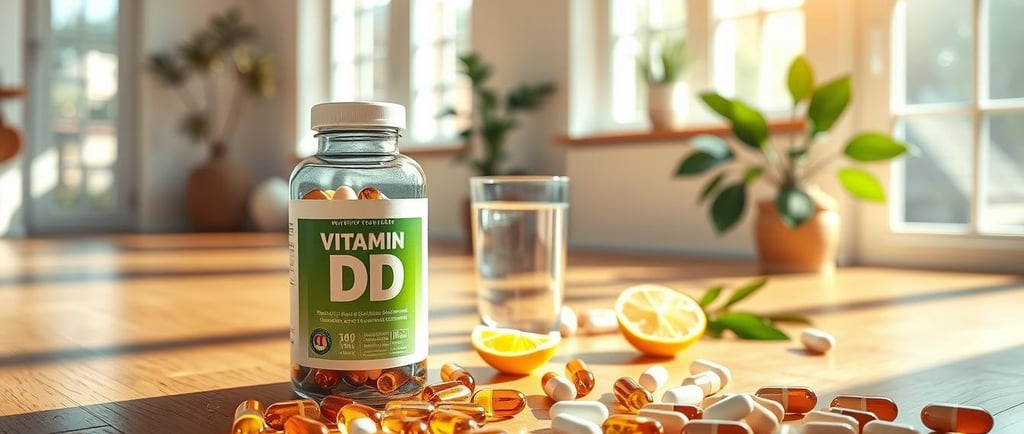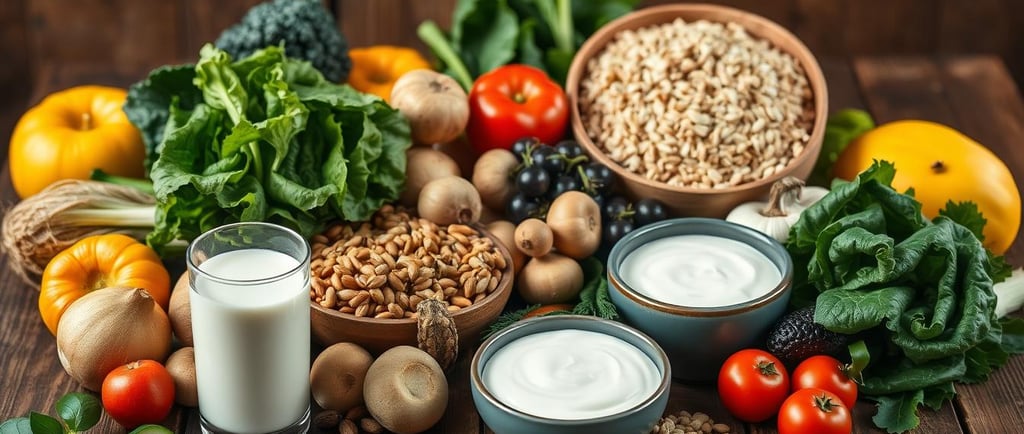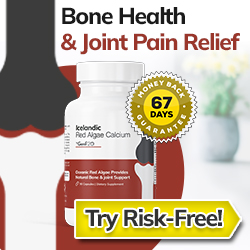Vitamin D: The Key to Maintaining Healthy Joints
Unlock the power of vitamin D for joint health. Understand how this vitamin can help preserve joint function and prevent age-related joint issues.
BONES & BODY WEIGHT
ActiveVitaLife
3/21/202511 min read
Why is vitamin D so vital for joints? This guide explains how it boosts bone density, reduces inflammation, and protects cartilage—key factors in joint health. Discover why even with a balanced diet, many lack enough vitamin D. Learn how sunlight, food, or supplements can bridge the gap.
Key Takeaways
Vitamin D directly impacts joint health by supporting bone strength and reducing inflammation.
Deficiencies are common but often overlooked in joint pain discussions.
Sunlight, diet, and supplements are proven ways to boost vitamin D levels.
Healthy joints require a mix of vitamin D and other nutrients like calcium.
Testing and personalized intake are key for long-term joint wellness.
Understanding Vitamin D and Its Importance
Vitamin D is both a nutrient and a hormone. It's key for keeping vitamin d and bone health in check. It starts its journey from sunlight, becoming something our bodies can use.
What Is Vitamin D?
Vitamin D comes in two types: vitamin D2 (ergocalciferol) and vitamin D3 (cholecalciferol). Research shows D3 is 87% better at raising blood levels than D2.
Types of Vitamin D
D2: Found in plants, less bioavailable
D3: Produced in human skin, most efficient for health
How Vitamin D Is Synthesized
When skin absorbs UVB rays, it turns 7-dehydrocholesterol into D3. This then goes to the liver, becoming 25-hydroxyvitamin D. The kidneys activate it into calcitriol, the active form that helps bones and joints.
Without enough synthesis, bones and joints can weaken. This shows why sunlight and diet are key for vitamin d and bone health.
The Role of Vitamin D in Joint Health
Vitamin D is key for bone and tissue health. It plays a big role in how well our joints work. This section will look at how vitamin D affects joints in three important ways.
Vitamin D's Impact on Bone Density
Vitamin D helps our body absorb calcium. This is important for making strong bones. Strong bones support our joints, making them less stressed.
Without enough vitamin D, bones get weak. This can lead to fractures and unstable joints. Studies show that the right amount of vitamin D keeps bones strong, supporting joint movement.
How It Affects Cartilage
Cartilage has vitamin D receptors that help it stay healthy. Research shows that enough vitamin D slows down cartilage damage. This is because it helps make collagen, a key part of cartilage.
Collagen keeps cartilage flexible and prevents it from wearing down. Keeping these receptors active is essential for joint health over time.
Connection to Inflammation
Vitamin D helps control inflammation in the body. Chronic inflammation can harm joints. But vitamin D can reduce this inflammation.
Less inflammation means less pain and swelling for people with arthritis. This shows how important vitamin D is for joint health, helping with both autoimmune and degenerative conditions.
Deficiency and Its Effects on Joints
Low vitamin D levels can harm joint function, causing pain and less mobility. Early signs include constant tiredness, weak muscles, and mood swings. Symptoms like stiff joints, aching, and less movement may point to vitamin d deficiency joint pain. Ignoring these signs can lead to serious long-term joint problems.
Symptoms of Vitamin D Deficiency
General symptoms: fatigue, weakness, mood swings.
Joint-specific issues: persistent pain, stiffness, reduced mobility.
Severe cases may cause bone tenderness and chronic discomfort.
Risks for Joint Health
Chronic deficiency weakens bones and cartilage, increasing risks like:
Osteomalacia: Softening of bones, causing widespread pain and fractures.
Osteoporosis: Bone density loss raises injury risks, specially in hips and spine.
Arthritis progression: Inflammation worsens, accelerating joint damage over time.
Populations at Higher Risk
Certain groups face greater risk of deficiency:
Adults over 65: reduced skin synthesis.
Those with limited sun exposure (e.g., office workers, night-shift employees).
People with darker skin tones, as melanin reduces vitamin D production.
Individuals with Crohn’s, celiac, or obesity, which hinder absorption.
Residents in northern U.S. states like Maine or Minnesota, where sunlight is scarce in winter.
Sources of Vitamin D
To get enough vitamin D, look at natural foods, sunlight, and supplements. Here's how to use each for better joint health.
Natural Food Sources
Fatty fish like salmon, egg yolks, and mushrooms have some vitamin D. For example, 3 ounces of salmon has about 400 IU. But, it's hard to get enough from food alone, which is key for joints.
Fatty fish: Salmon, mackerel (400–600 IU per 3-ounce serving)
Mushrooms: UV-exposed varieties (100–400 IU per cup)
Fortified foods: Milk, cereals (often 100 IU per serving)
Sunlight Exposure
UVB rays help make vitamin D. Try to get 10–30 minutes of sun at midday, 2–3 times a week. If you have fair skin, you might need less time. In the northern U.S., you might need more sun in winter.
"Moderate sun exposure supports natural vitamin D production without overexposure risks," advises the National Institutes of Health.
Supplements and Dosages
When sunlight and diet aren't enough, best vitamin d supplements for joint health help. Pick D3 (cholecalciferol) because it works better. Take 1,000–2,000 IU daily, in liquid or softgels for better absorption. Choose brands like Nature Made or NOW Foods, which may have vitamin K2 or magnesium for extra benefits.
Take supplements with a diet rich in calcium for the best results. Always talk to a healthcare provider before taking high doses.
The Mechanism of Action in Joint Function
Vitamin D plays a key role in vitamin d joint support at the cellular level. Joint tissues have special receptors for this nutrient. These receptors start a chain of biological events important for health.
Vitamin D Receptors in Joint Tissues
These receptors are found in synovial fluid, cartilage, and muscles. When they're activated, they help reduce inflammation and slow down cartilage damage. Studies show this helps keep joints healthy and moving well.
Interaction with Other Nutrients
Calcium and magnesium: Vitamin D helps the body absorb calcium, making bones and joints stronger.
Vitamin K2: Works with D to guide calcium to bones, avoiding joint deposits.
Zinc and omega-3s: Together, they reduce inflammation, supporting joint health over time.
Hormonal Regulation
Vitamin D acts like a hormone, controlling calcium levels and cell growth. The right balance keeps bones dense and joints healthy. Without enough, joints can become stiff or painful.
Having enough vitamin D is key for these processes to work well. Pairing it with other nutrients boosts vitamin d joint support. This helps protect joints from damage over time.
Vitamin D and Joint Pain
Vitamin D is getting more attention for its role in easing joint pain. People with arthritis might find relief by keeping their vitamin D levels up. This part looks into how vitamin D works to lessen inflammation and pain in joints.
How Vitamin D May Alleviate Pain
Low vitamin D can make joint inflammation worse. It helps control immune cells that cause pain in arthritis. Vitamin D can make joints less stiff and tender. It also makes muscles around joints stronger, which reduces pressure on them.
Studies Supporting Pain Relief
A 2022 study in the Journal of Rheumatology found 60% of osteoarthritis patients with vitamin D deficiencies reported reduced pain after 12 weeks of supplementation.
A 2021 trial in the Annals of the Rheumatic Diseases showed rheumatoid arthritis patients with sufficient vitamin D had lower C-reactive protein levels, a marker of inflammation.
Personal Experiences and Testimonials
A 62-year-old participant noted, 'After 3 months of vitamin D3 supplements, my knee stiffness decreased so much I could walk without a cane.'
While it's not a cure, treating deficiencies can greatly improve life for many. Always talk to a healthcare provider before starting new supplements to ensure safety.
Recommended Daily Intake for Joint Health
Figuring out how much vitamin D to take for joint health starts with knowing the official guidelines. Health organizations have different recommendations. This reflects their focus on general health versus joint health. Use these tips to match your intake to your health needs.
Guidelines from Health Organizations
Official bodies suggest different daily intake amounts:
Institute of Medicine: 600-800 IU daily for most adults
Endocrine Society: 1500-2000 IU for those at risk of deficiency
American College of Rheumatology: Emphasizes personalized dosing for arthritis patients
These ranges focus on overall health but might not fully meet joint needs.
Factors Influencing Requirements
Everyone's needs are different. Consider these factors:
Age: Adults over 70 need 80% more due to reduced skin synthesis
Body weight: Excess fat stores vitamin D, lowering bioavailability
Geography: Northern regions require 30% higher intake due to limited sunlight
Medical conditions: Osteoarthritis patients often require 2000-5000 IU
Adjusting Intake Levels
Begin with a blood test to check your levels. Take supplements with meals for better absorption. Monitor changes every 3 months with your doctor's help. Choose cholecalciferol forms for joint health supplements.
Testing Vitamin D Levels
“Low vitamin D levels are a common but treatable cause of musculoskeletal pain,” says the National Institutes of Health.
Knowing your vitamin D status is key to addressing vitamin d deficiency joint pain. Testing shows if low levels cause stiffness or discomfort.
Methods of Testing
Accurate testing starts with the right test:
25-hydroxyvitamin D test: The gold standard for measuring stored vitamin D levels.
Home kits: Affordable options exist, but verify results with a lab for accuracy.
When to Get Tested
Consider testing if you experience:
Chronic joint pain despite treatment
Risk factors like limited sun exposure or dark skin
Seasonal changes, like in winter months
Advocate for testing if your provider hesitates—request a 25(OH)D blood test.
Understanding Test Results
Results are measured in ng/mL. Aim for these ranges:
vitamin d deficiency joint pain.
30–50 ng/mL: Optimal for joint health, despite some labs labeling 20+ as “normal.”
Over 50 ng/mL: May indicate toxicity risks; consult a doctor.
Maintaining levels between 30–50 ng/mL supports cartilage health and reduces inflammation. Work with a provider to adjust intake based on results.
Integrating Vitamin D in Your Diet
To boost vitamin D for your joints, choose your meals wisely. Plan to eat foods rich in vitamin D along with calcium and omega-3s. This combo supports your joints well. Here's how to do it right:
Meal Planning for Adequate Intake
Sources: Eat fatty fish like salmon and mackerel, eggs, and mushrooms 3-4 times a week.
Pairing: Use olive oil or avocado to help your body absorb vitamin D better.
Timing: Eat vitamin D foods at breakfast and lunch when your body is most active.
Fortified Foods to Consider
Check out Silk Almond Milk (with 15% D per serving) or Nature's Pride orange juice. These are easy to find but choose natural sources first. Look for foods with at least 10% DV per serving.
"Mix fortified foods with sunlight for the best vitamin D levels," advises Dr. Emily Carter, a registered dietitian.
Recipe Ideas for Vitamin D Boost
Salmon Cakes with Mushrooms: Mix canned salmon (with bones) and sautéed mushrooms. Bake at 375°F for 20 minutes.
Sardine Toast: Top whole-grain bread with sardines, poached eggs, and spinach.
Tuna-Stuffed Avocados: Mix canned tuna with avocado halves, add lemon juice and parsley.
While food alone might not be enough, it's a big part of the solution. Add sun exposure (10–15 mins daily) for the best results.
Lifestyle Factors for Joint Health
Lifestyle choices are key to getting the most from vitamin D for joint health. Exercise, managing weight, and staying hydrated are essential. These habits help keep joints strong and reduce pain.
Importance of Exercise
Exercise makes muscles around joints stronger, easing strain and boosting mobility. Low-impact activities enhance vitamin D's effect on bone health. Here are some good options:
Swimming: It's gentle on joints and builds muscle
Cycling: It strengthens legs without putting pressure on knees
Walking: It improves blood flow and joint flexibility
Weight Management and Its Influence
Too much body fat can tie up vitamin D, making it less effective for joints. Losing 5-10% of body weight can help. Here's how to do it:
Keep track of your food portions
Eat foods high in fiber to stay full
Combine diet changes with exercise for lasting results
The Role of Hydration
Drinking enough water keeps joints lubricated. It helps vitamin D strengthen bones and cartilage. Aim for:
8-10 cups of water a day
Drink more when you're active or it's hot outside
Use a water bottle to track your intake
Sticking to these habits lets vitamin D work best to ease pain and protect joints.
Consultations and Professional Advice
Getting the right amount of vitamin D for joint health often needs personal advice. Doctors are key in figuring out what's best for each person. Knowing when to ask for help is important for safe and effective care.
When to See a Healthcare Provider
If joint pain doesn't go away with vitamin D supplements, see a doctor. Also, if you're feeling nauseous, weak, or have kidney stones, get medical help. These symptoms could mean too much vitamin D.
People with kidney disease or autoimmune disorders should also talk to a doctor. These conditions can change how vitamin D works in the body.
Importance of Personalized Guidance
Everyone is different, with unique needs. Things like medicines, genes, and health conditions affect how vitamin D works. A doctor can look at your lab results and health history to make sure you're getting the right amount.
Role of Nutritionists in Joint Health
Registered dietitians create diets that are good for your joints. They make sure you get enough vitamin D, calcium, omega-3s, and foods that fight inflammation. They help you avoid too much of anything and keep your bones strong.
They also check in regularly to see how you're doing and make changes as needed. This way, your diet stays on track with your health goals.
FAQ
What role does vitamin D play in maintaining joint health?
Vitamin D is key for joint health. It helps absorb calcium, boosts bone density, and keeps cartilage strong. It also controls inflammation, which helps prevent joint pain and arthritis.
Can a deficiency in vitamin D lead to joint pain?
Yes, not having enough vitamin D can cause joint pain and stiffness. It can make conditions like osteomalacia and osteoporosis worse. These affect how well your joints work.
What are the best vitamin D supplements for joint health?
For joint health, choose supplements with vitamin D3 (cholecalciferol). It's more easily used by the body than D2. Look for products tested by third parties and consider those with vitamin K2 for extra benefits.
How much vitamin D do I need for optimal joint health?
Most adults need 600 to 800 IU of vitamin D daily. But, if you're older or don't get much sun, you might need more. Always talk to a healthcare provider about your needs.
What natural food sources are high in vitamin D?
Foods high in vitamin D include fatty fish, egg yolks, and fortified foods like milk and cereals. But, you might need supplements to get enough.
How does vitamin D affect inflammation in the joints?
Vitamin D fights inflammation and helps control the immune system. This can lessen symptoms of arthritis and improve joint health.
Is there a link between vitamin D and arthritis?
Yes, low vitamin D levels may increase the risk of arthritis. They can also make symptoms worse. Keeping vitamin D levels up is good for managing arthritis.
When should I consider getting tested for vitamin D levels?
Get tested if you have ongoing joint pain, risk factors for deficiency, or are over 60. It's important for your joint health.
How can I increase my vitamin D intake through sunlight exposure?
Spend 10-30 minutes in midday sun a few times a week. This helps your body make vitamin D. But, remember to protect your skin from skin cancer too.
What are the symptoms of vitamin D deficiency related to joint health?
Signs of vitamin D deficiency include joint pain, stiffness, and muscle weakness. Fatigue and reduced mobility are also symptoms. Catching these early can prevent serious damage to your joints.
Read the Article: Proven Supplements for Relieving Knee Soreness.
Activevitalife
Your Guide to Weight Management & Muscle Building
Contact:
Trust
contact@activevitalife.click
© 2025. All rights reserved.
Disclaimer: The information provided on this blog is for general informational and educational purposes only and should not be considered medical advice. The content is not intended to diagnose, treat, cure, or prevent any disease or health condition.







